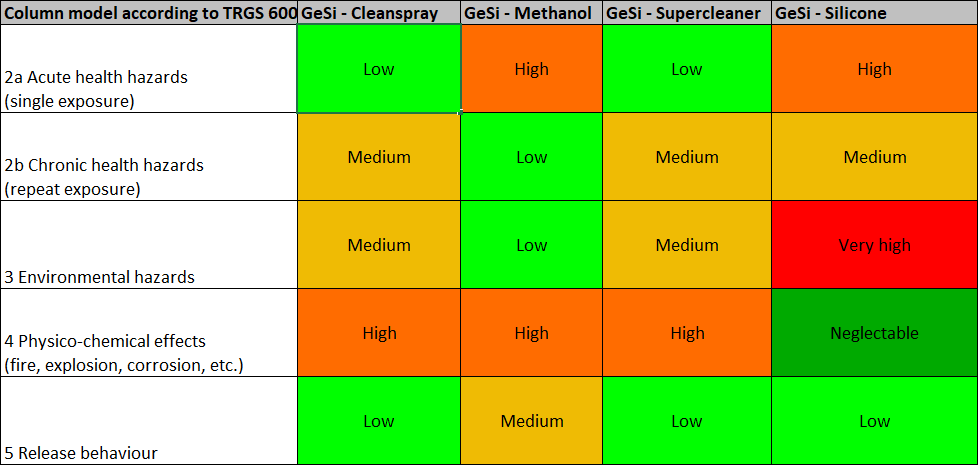The Column Model (Part 1)
In my last blog post, I dealt with the topic of substitution testing of hazardous substances. In that context, I already mentioned the column model from the German TRGS 600 [1]. Today I would like to give you an insight on how to implement the column model.
How does the column model help?
The aim of the column model is to help you quickly compare different substances and mixtures. Therefore, you look at the substance you want to substitute and the possible substitution solution(s) in terms of different properties. The data you need for the comparison are taken from the safety data sheet. The different criteria are compared column by column. This provides information on whether the substances are similar or different in terms of hazards. Of course, substitution only makes sense if there are any differences.
The Columns
The column model is, as the name suggests, divided into columns. Each column contains a specific hazard. The model considers acute health hazards, chronical health hazards, environmental hazards, physico-chemical effects, release behaviour and the process itself. Within a column, the hazard is subdivided according to certain properties. For example, a hazardous substance labelled H300 (life hazard if swallowed) is classified as a very high hazard in the area of acute health hazards. A hazardous substance that is not hazardous to water, on the other hand, has a negligible hazard in the “environmental hazard” column.

Application of the column model
The question of whether and by what you can replace a hazardous substance is difficult to answer without any support. By classifying the hazardous substances in the column model via the information from the safety data sheet, you get a good overview of how great the hazard is. You can see an example in the picture above. If you compare two hazardous substances with each other and one of them is more hazardous than the other in all points considered, the decision is easy. However, in reality it will often be the case, that in one column hazardous substance 1 is less dangerous than hazardous substance 2. In another column, the opposite occurs and hazardous substance 1 is more dangerous. In this case, you have to take in consideration whether a substitution makes sense or not. TRGS 600 also provides guidance on how to decide in such cases.
Conclusion
Ultimately, substitution always depends on the present situation. When working in a closed system, the release behaviour is less relevant than the physico-chemical effects. Thus, substitution can make sense if the substitute substance has a lower hazard in the PC hazards, but a high hazard in the release behaviour. The column model is a good assistance for tackling the problem of substituting hazardous substances. It facilitates the start of substitution considerations and the process leading to decisions. How you apply the model is up to you. For example, you can work with an Excel spreadsheet into which you transfer the information from the safety data sheet. However, it is easier with a software that specialises on such tasks, such as GefStoff-Profi from GeSi³. Here you can compare the safety data sheets of your hazardous substances with one click. The necessary information is available anyway. With our SDBcheck® tool (currently only available in German, but it is possible to translate the browser page), you can also import the supplier’s SDS into your software automatically without having to type out the contents manually.
In the next part of this series, I will go into more detail about the individual columns of the model.
[1] Technical rules for hazardous substances, TRGS 600, Version 29.10.2020, BAuA

